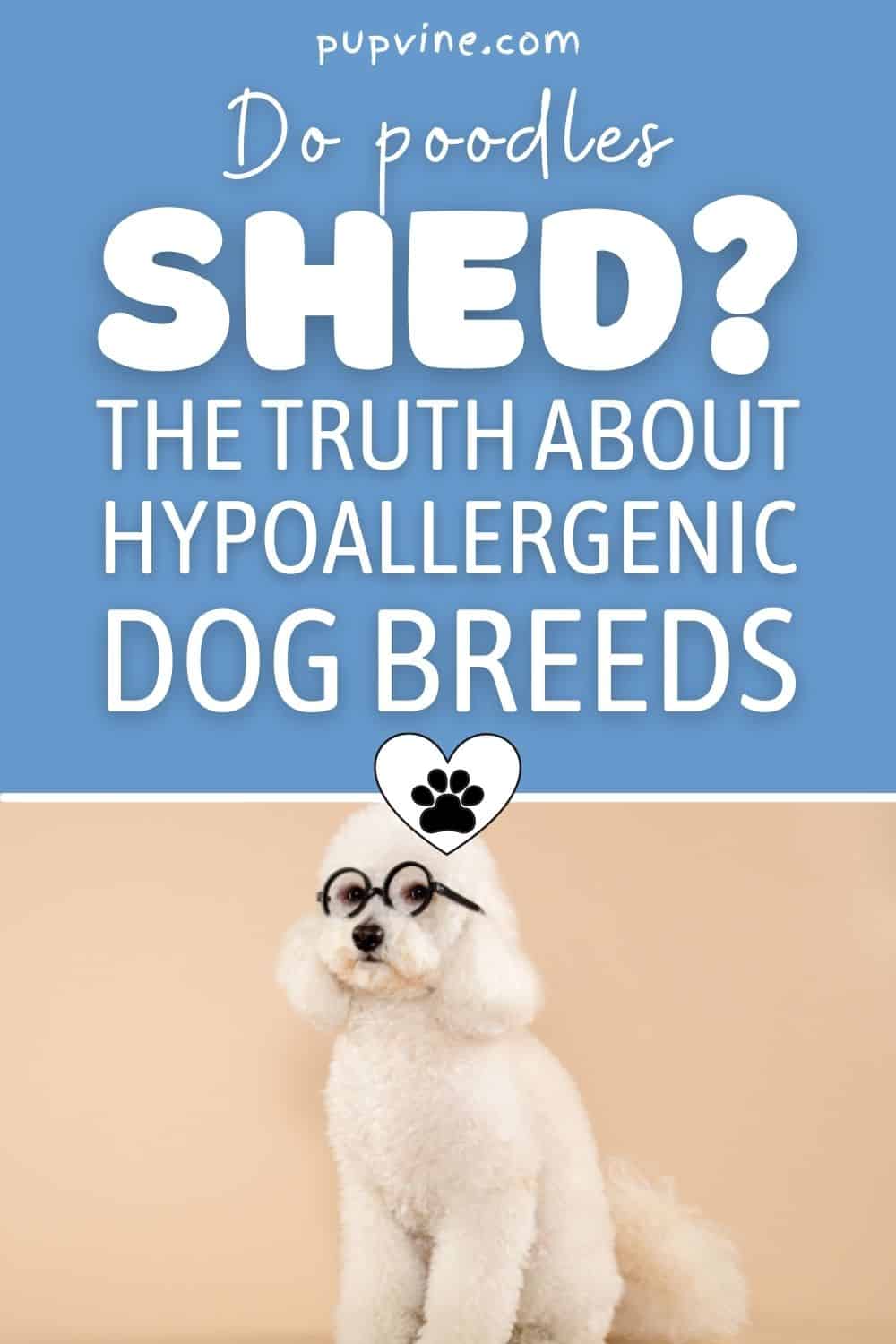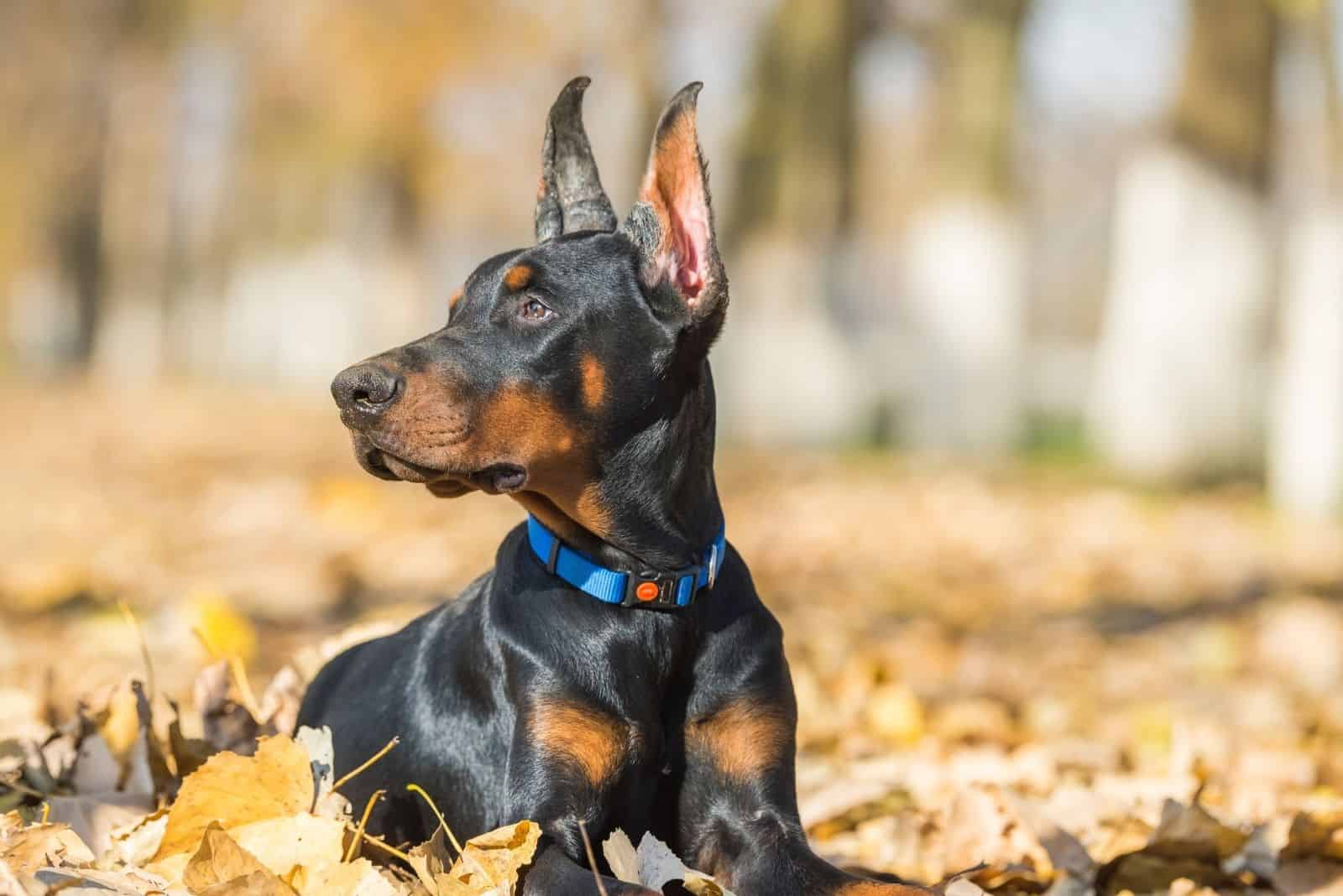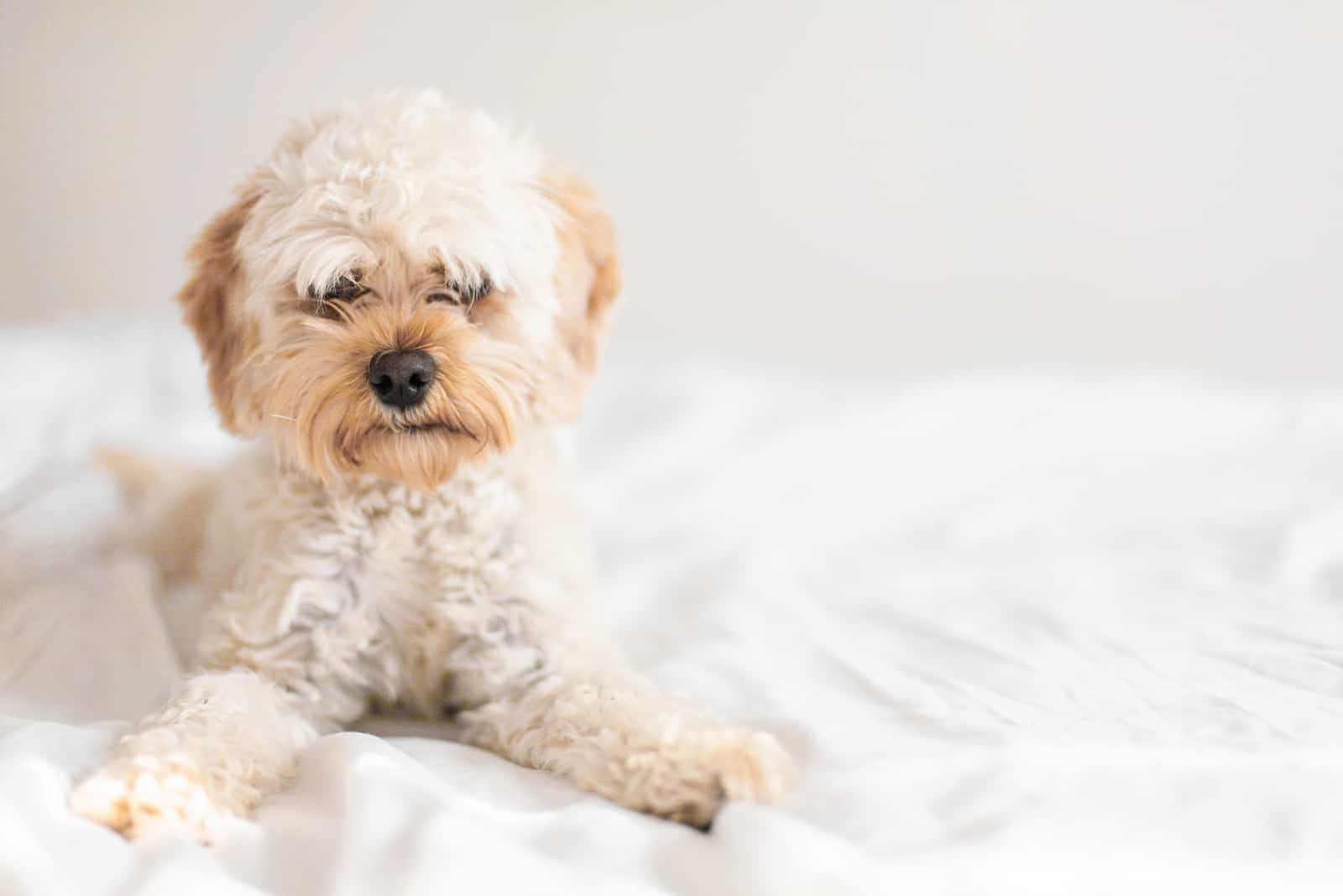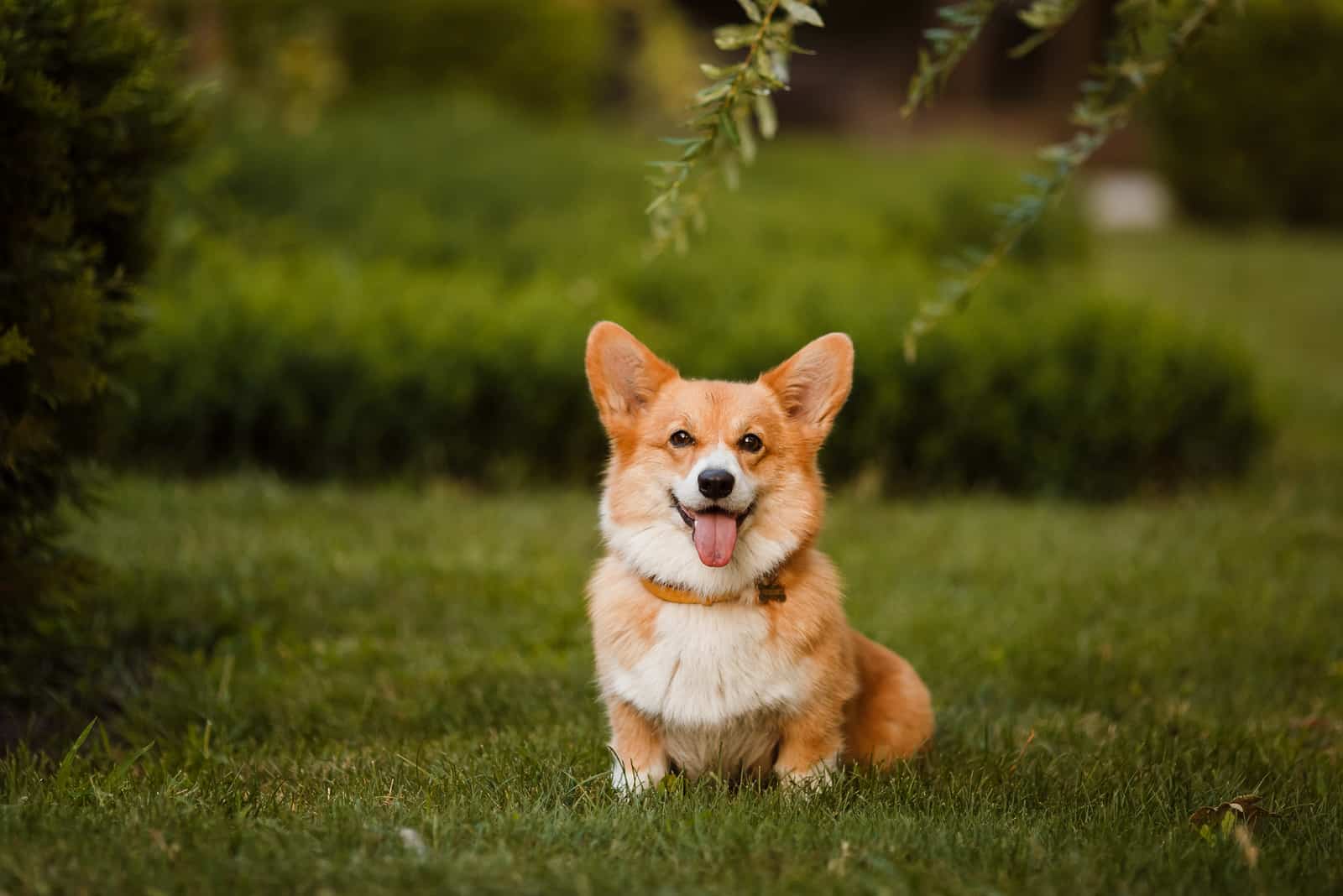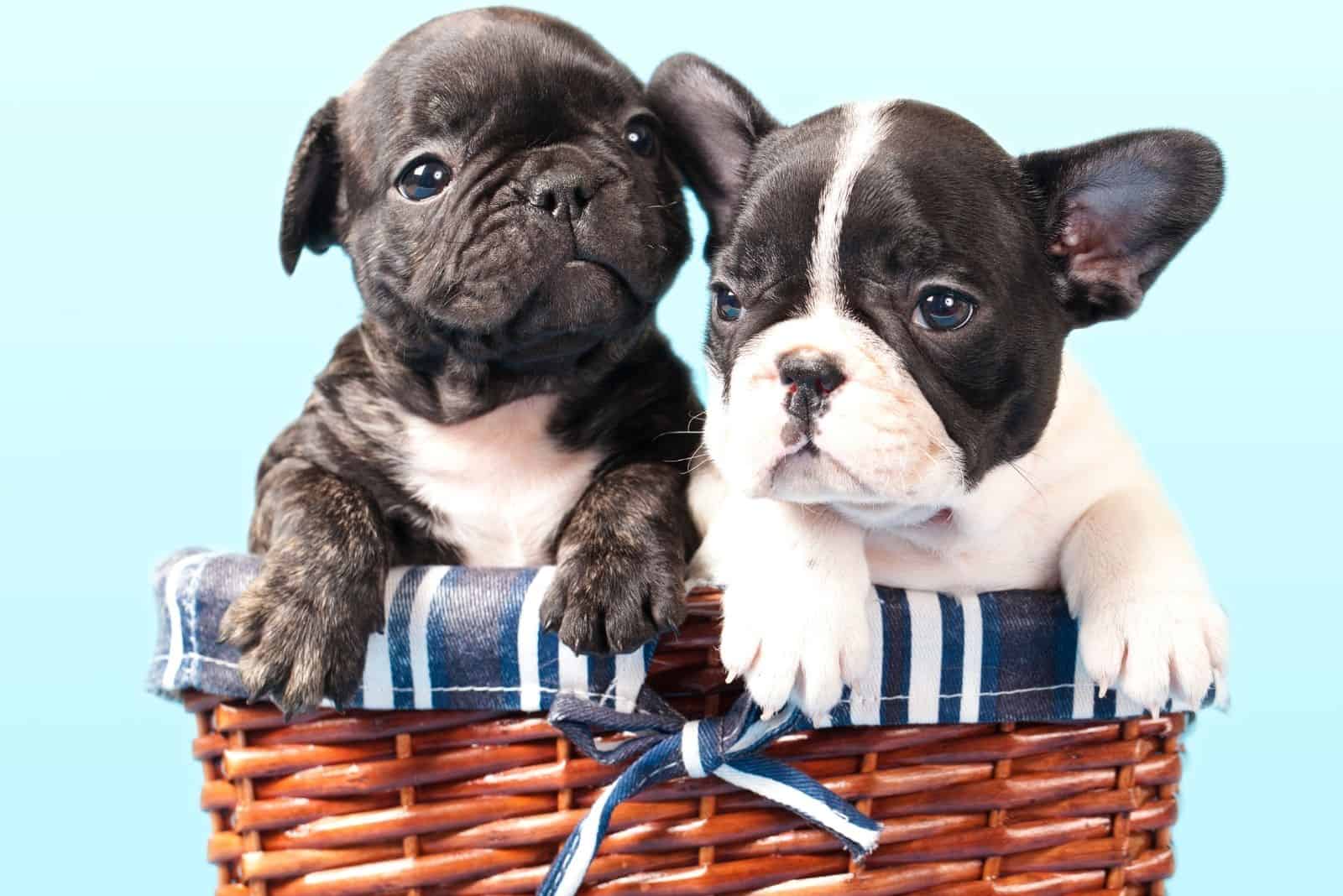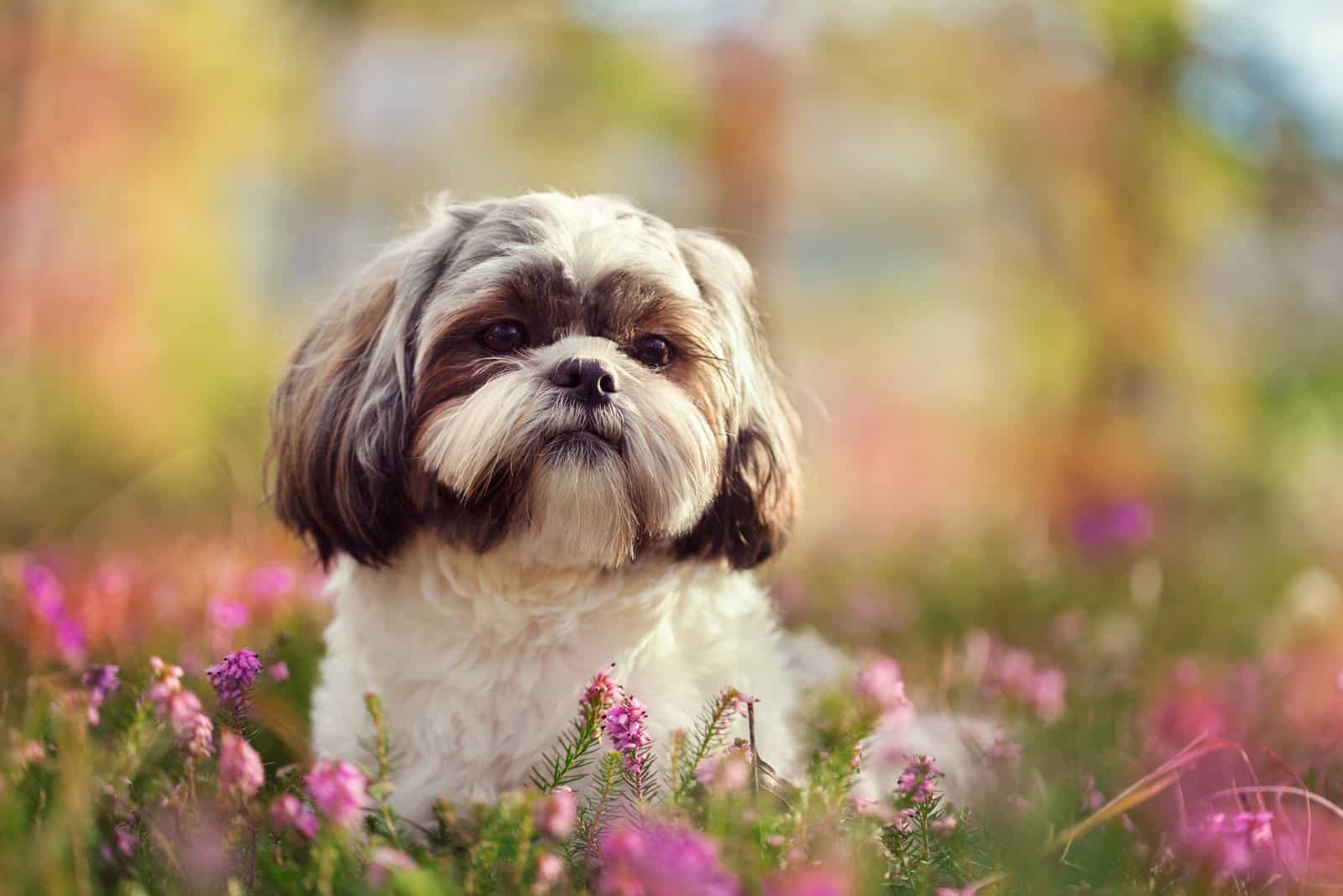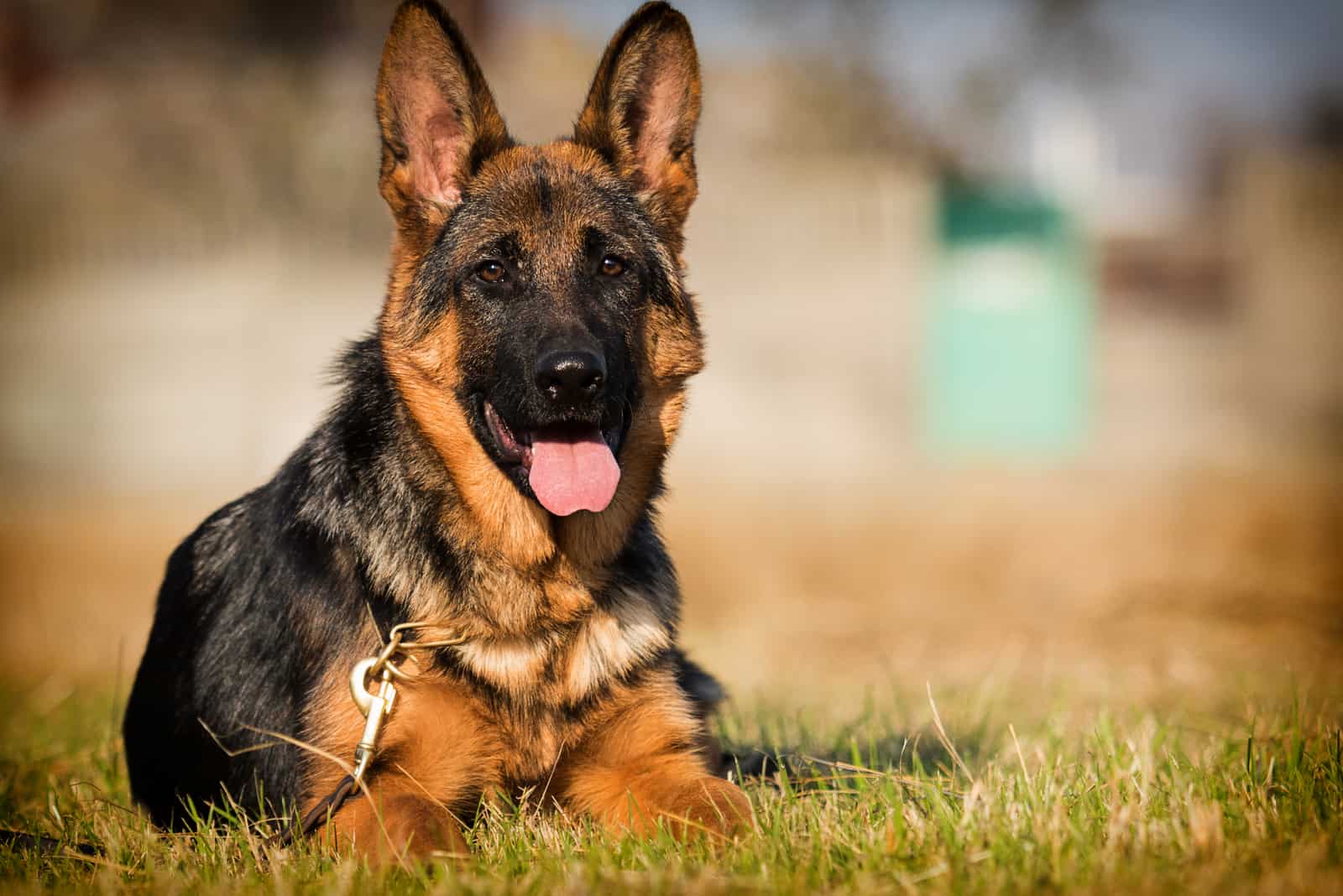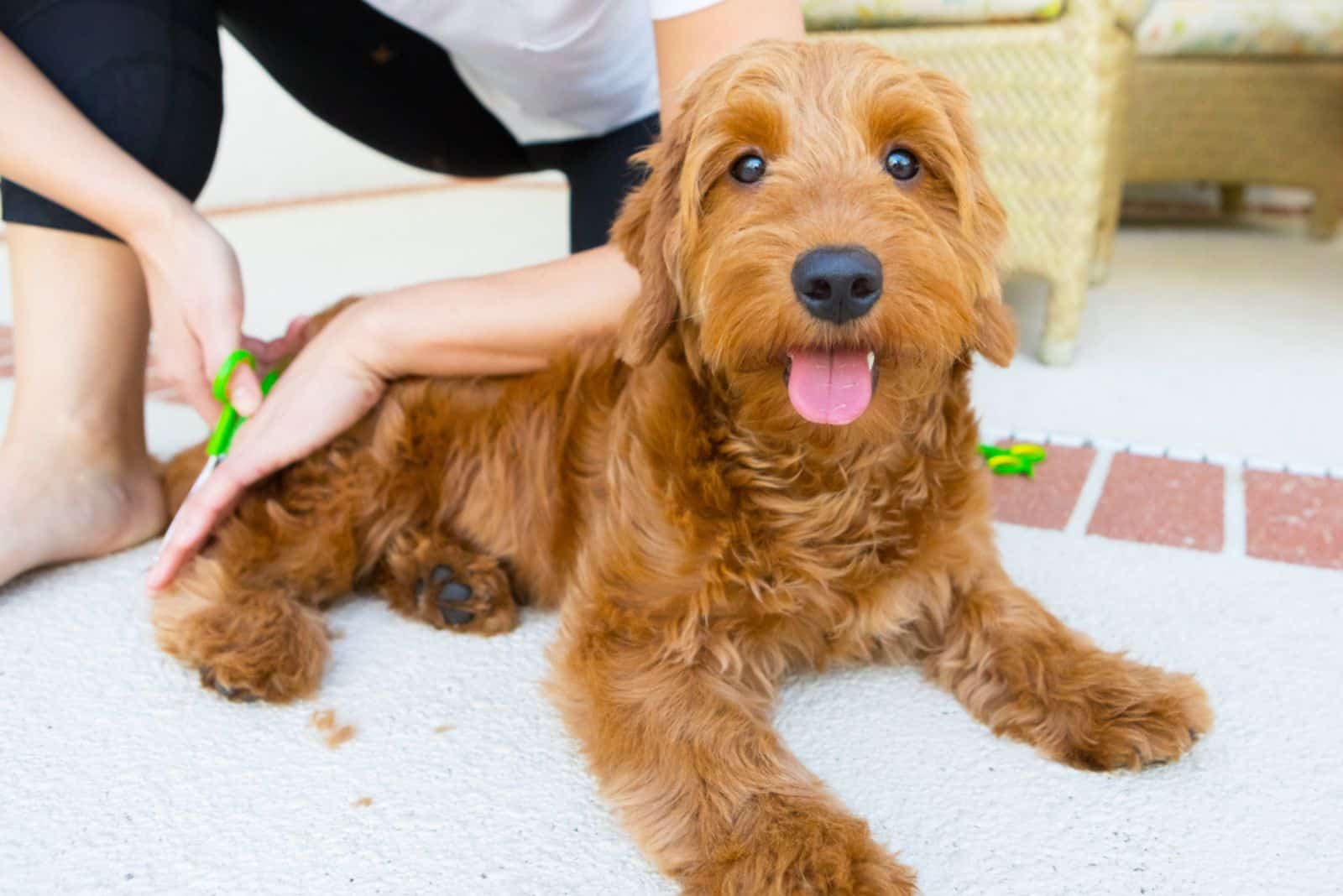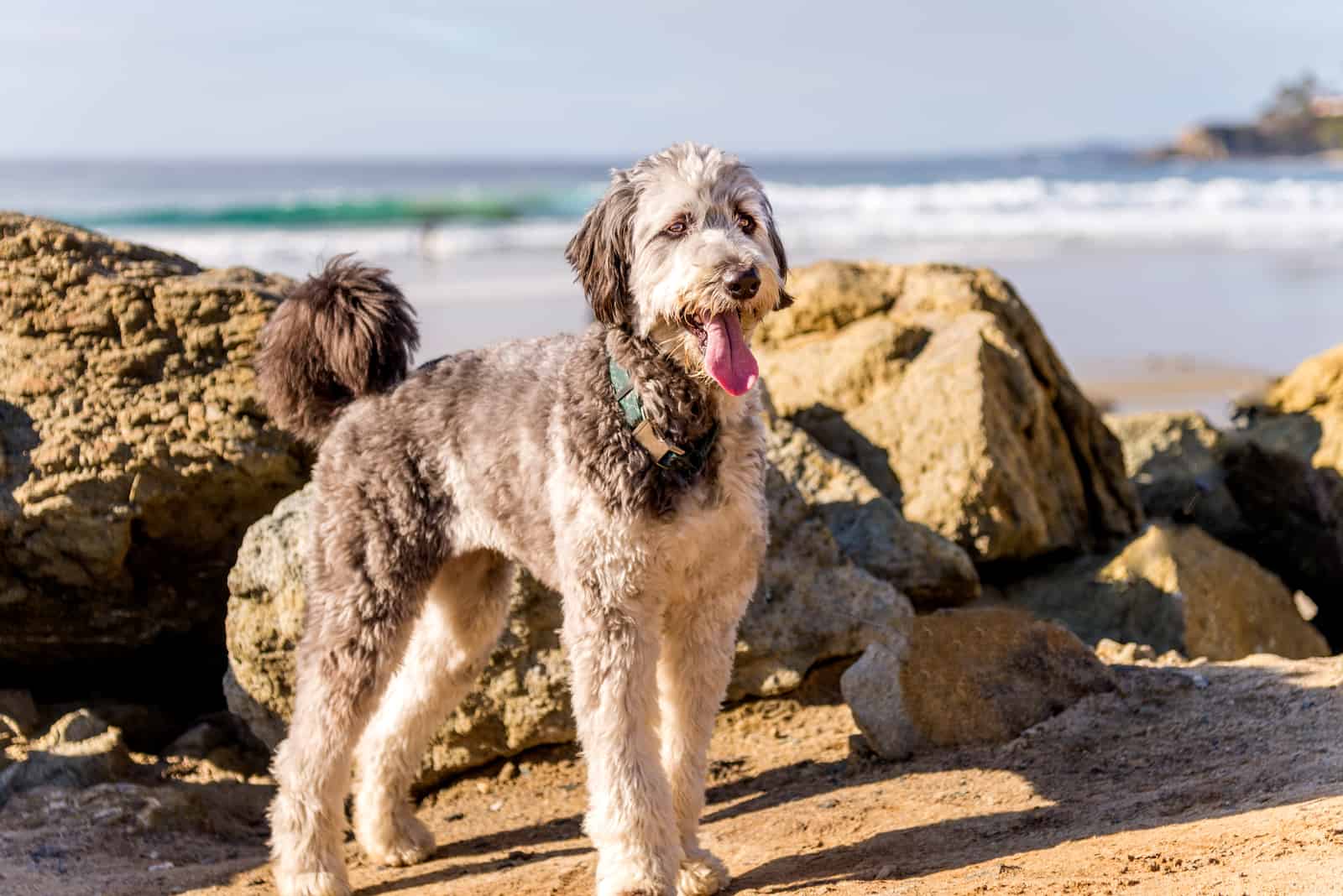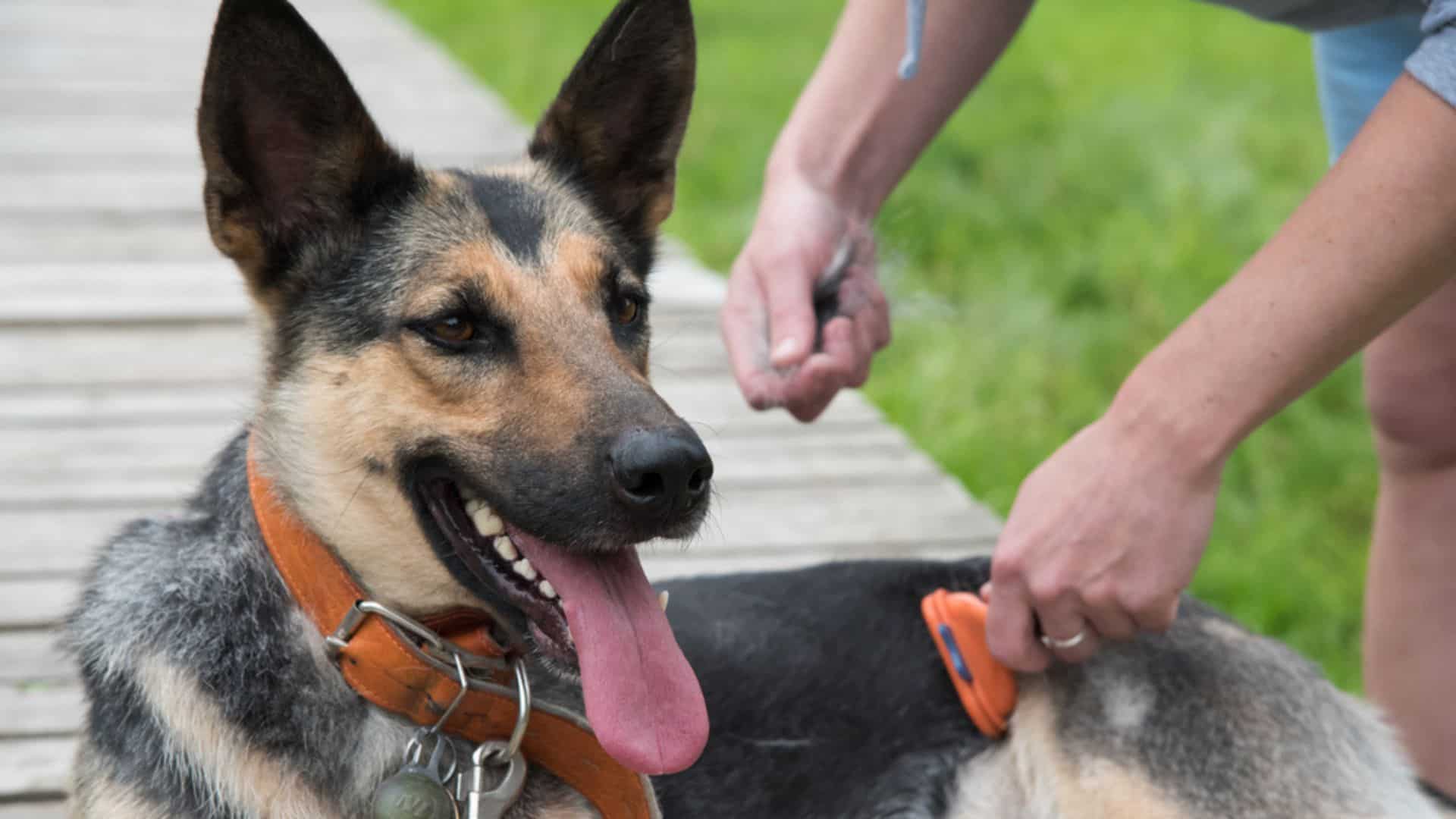When it comes to non-shedding, hypoallergenic dog breeds, Poodles are always on top of the list.
They are the first choice of many allergy sufferers looking for a pet that won’t give them issues.
Is there truth to these stories, or is the Poodle’s reputation undeserved? Do Poodles shed, and how much? Are they genuinely hypoallergenic?
We’ll give you the answers to these and many other questions.
About The Breed
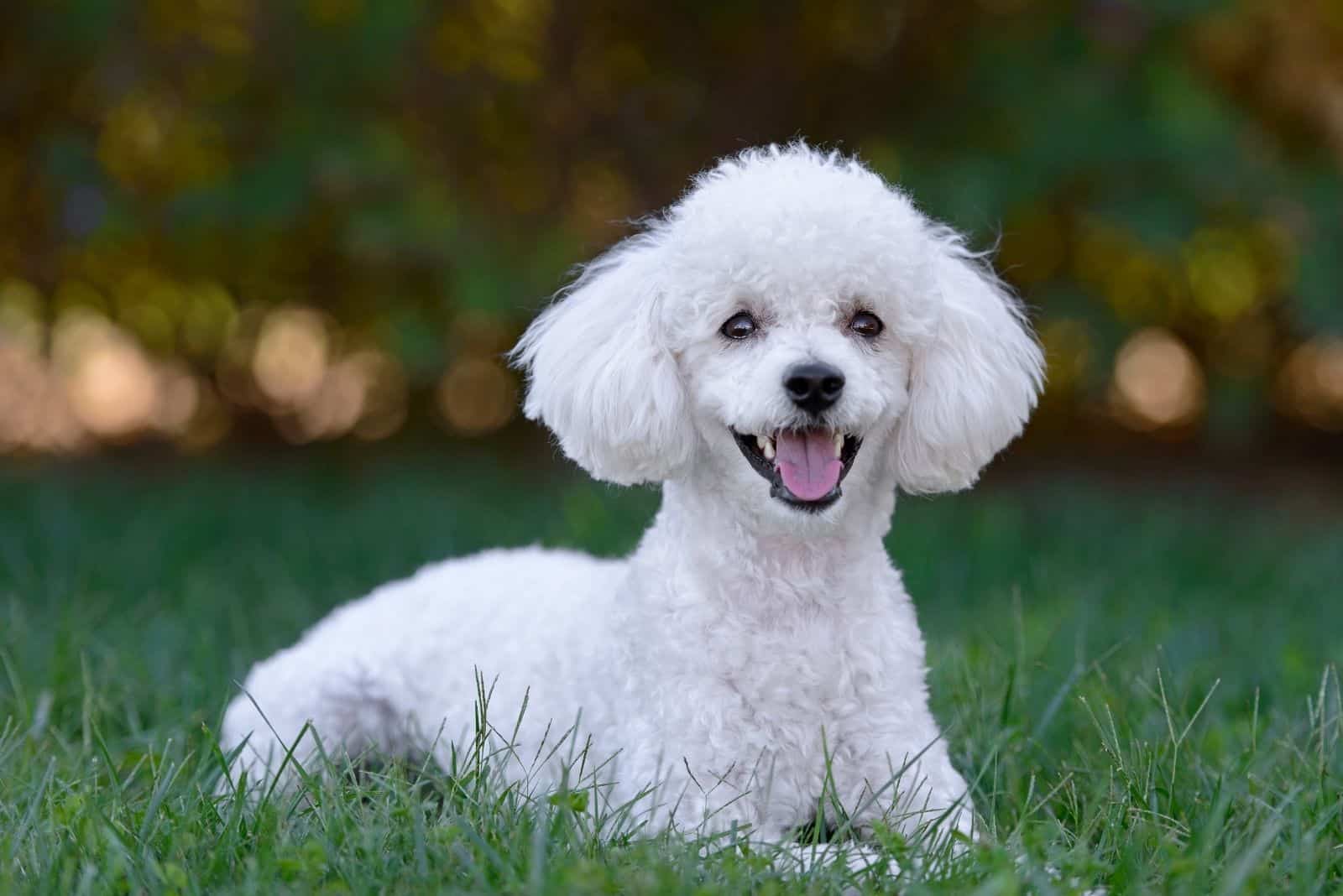
The Poodle is one of the oldest hunting dog breeds out there. You can find it on many art pieces from the 15th century or even earlier!
Even Rembrandt painted them. Of course, the Poodles of today have many differences compared to the original dogs of the breed.
But, one thing that has always stood up with this dog breed is its medium-length curly coat.
According to the American Kennel Club (AKC), Poodles come in three sizes.
These are Standard, Miniature, and Toy. As you might suppose, the Standard variation is the oldest of the three.
Depending on the country and the organization, the exact size of a Poodle may vary slightly. Some even recognize the fourth size, Medium or moyen next to the standard three.
The Poodle is an elegant dog, but it’s also very intelligent and active. A general rule of thumb is that the length of a Poodle’s body from the breastbone to the rump should equal the highest point of the shoulders all the way to the ground.
Coat Type
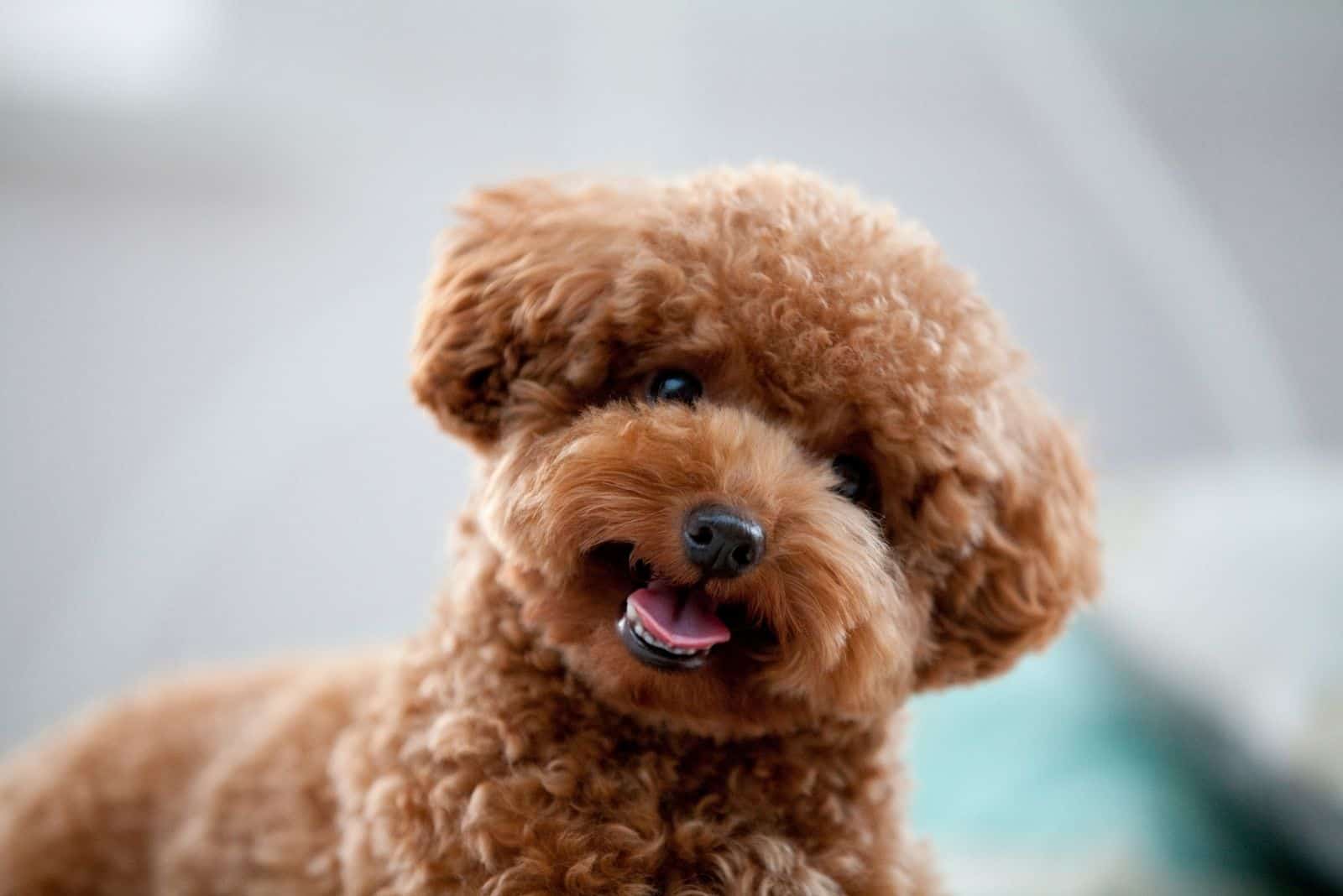
While most dog breeds have double coats, Poodles are different. They have a single coat, which means they don’t have an undercoat.
Their fur is dense and curly, and its texture varies from soft and wavy to coarse and woolly. Both are equally recognized and are considered standard Poodle coats.
Most dog owners give their Poodles a cut that is easily distinguishable. When you think of Poodles, chances are you think of a dog with a so-called ‘Poodle cut.’
Of course, Poodles aren’t born with this hairstyle. Despite this, many people wouldn’t even recognize a Poodle with its natural-styled fur.
While we’re on the subject of a Poodle’s coat, you should know that it comes in a wide variety of colors.
You can find them in black, white, brown, gray, blue, silver, beige, apricot, cream, and even red! They can also have many patterns, such as parti, phantom, sable, and brindle.
Despite the AKC recognizing Poodles in many coats, only solid-colored Poodles are allowed to participate in competitions.
Do Poodles Shed?
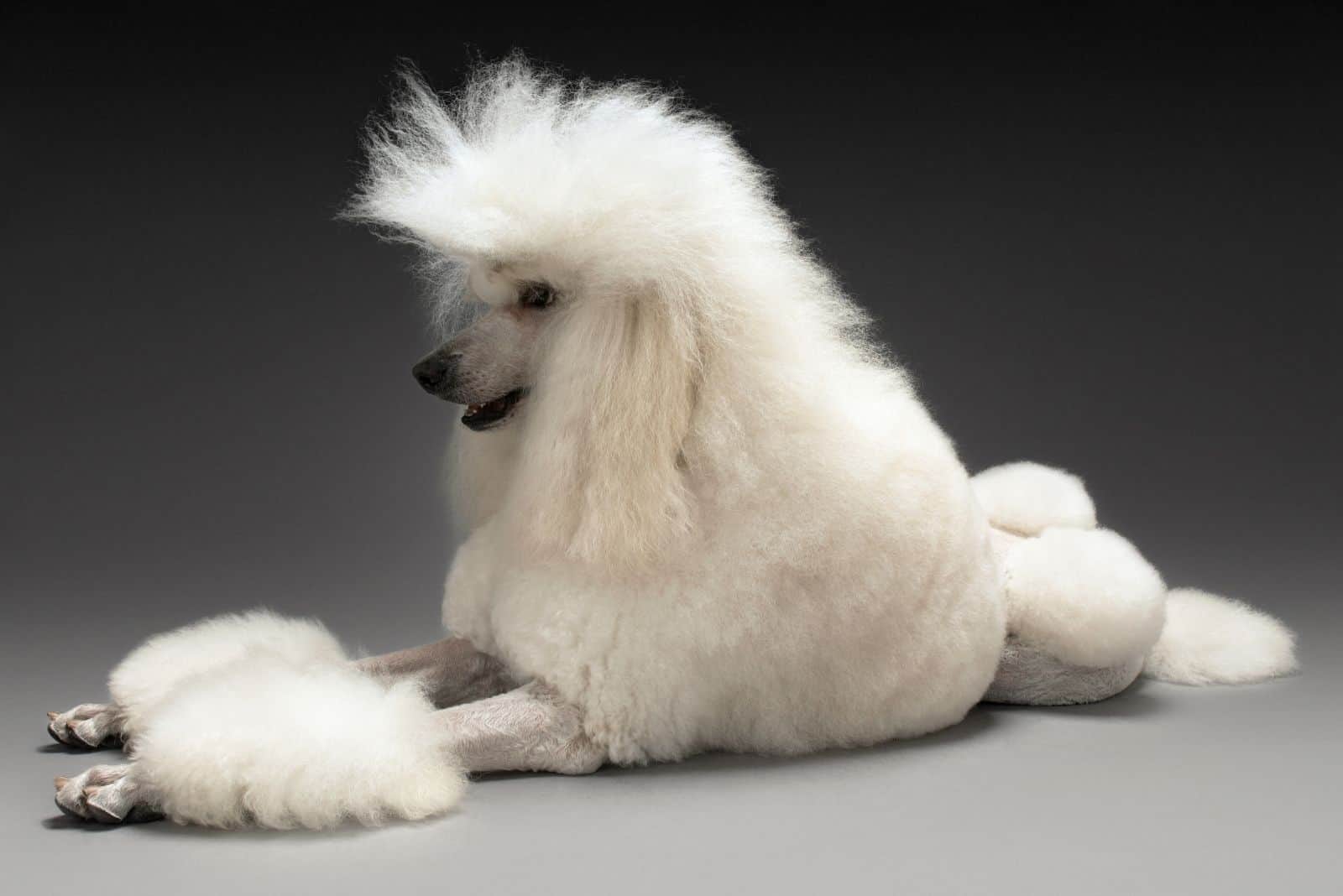
Yes, Poodles do shed!
All dogs shed to a certain amount. Their hair follicles need to change from time to time.
The aged ones fall off, so the new hairs can replace them. The same happens to human hair and with any animal with fur.
However, Poodles are a low-shedding breed. Their hair falls off in small amounts, especially compared to other dogs with medium-length coats.
Not just that, but when Poodles shed, their fur won’t simply fall off their body. Instead, it will tangle in the surrounding coat.
This leaves the impression that Poodles are non-shedding dogs. If you’re a Poodle owner, you’ll rarely see their hairs on the floor, clothes, or furniture.
There are some downsides to this, though. Since loose hair stays tangled in a Poodle’s curls, its fur is prone to matting.
Because of this, visits to a professional groomer are a must. It would be best if you also dedicated some time to regular brushing of your pup’s fur.
All of this can take you up to ten hours a week, which sounds like getting an odd job!
Still, if you’re looking for a breed of dog that doesn’t shed that much, and if you hate vacuuming dog hair from your clothes and furniture every day, then Poodles can be a great option.
How Much Do Poodles Shed?
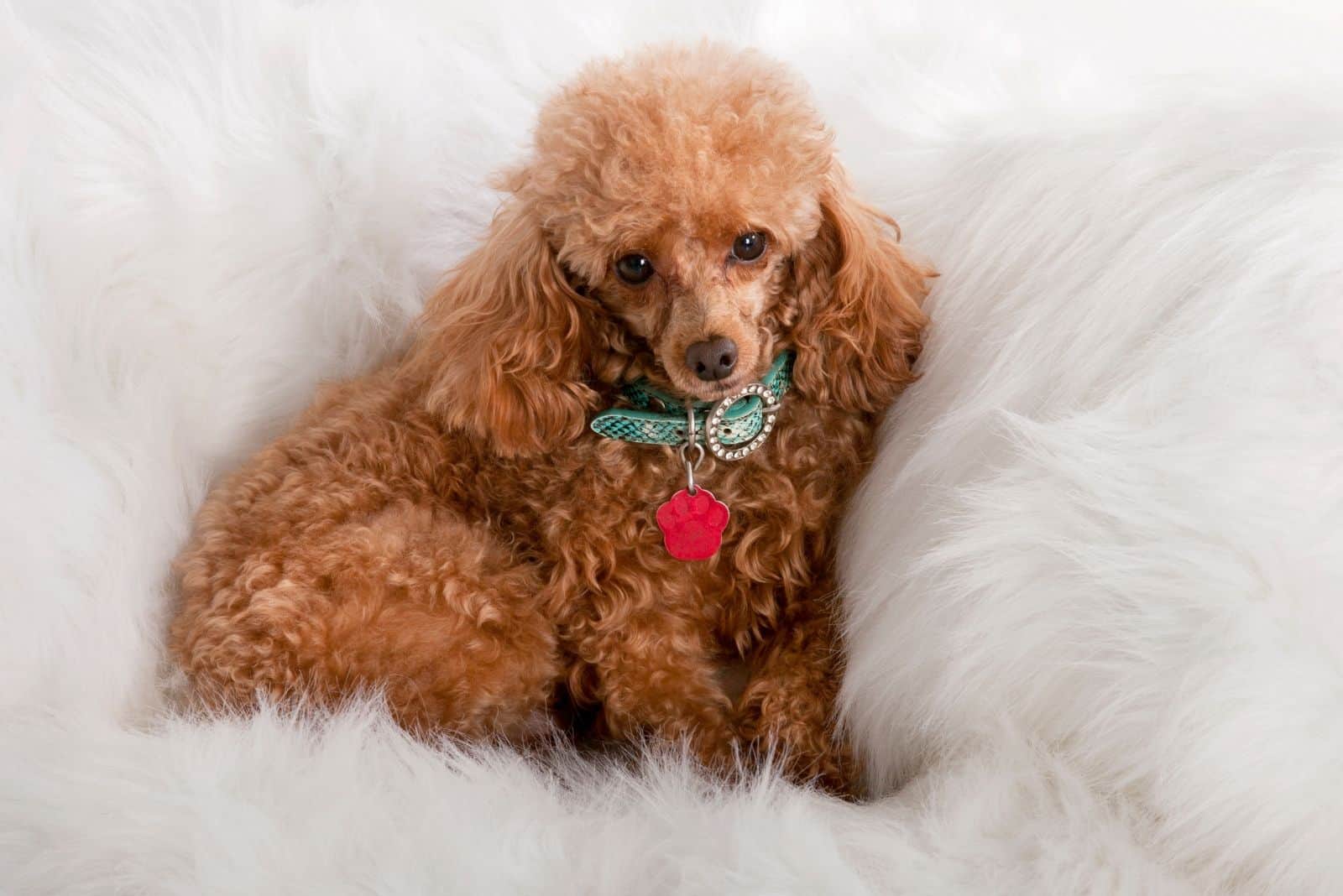
There isn’t much research available about the amount of shedding in specific dog breeds.
However, what we do know is that Poodles typically shed around 100 hairs a day.
Yes, some people paid so much attention to this that they counted hairs that came off their Poodles.
Of course, the exact number varies from dog to dog, but still, for a canine with hairs all over its body, losing 100 hairs daily is very little.
Large canines will shed more than small dogs, such as, for example, Toy Poodles.
The bigger the pup’s body, the more hair it has, resulting in more hair loss as time passes.
If you know this, then it isn’t a surprise that many low-shedding dog breeds are small in size.
Don’t be worried if your Poodle sheds more than you expected. As long as the amount is consistent, this is entirely normal.
No two dogs are alike, and your Poodle might simply have a type of fur that is a bit more prone to shedding.
What Can You Do About Poodle Shedding?
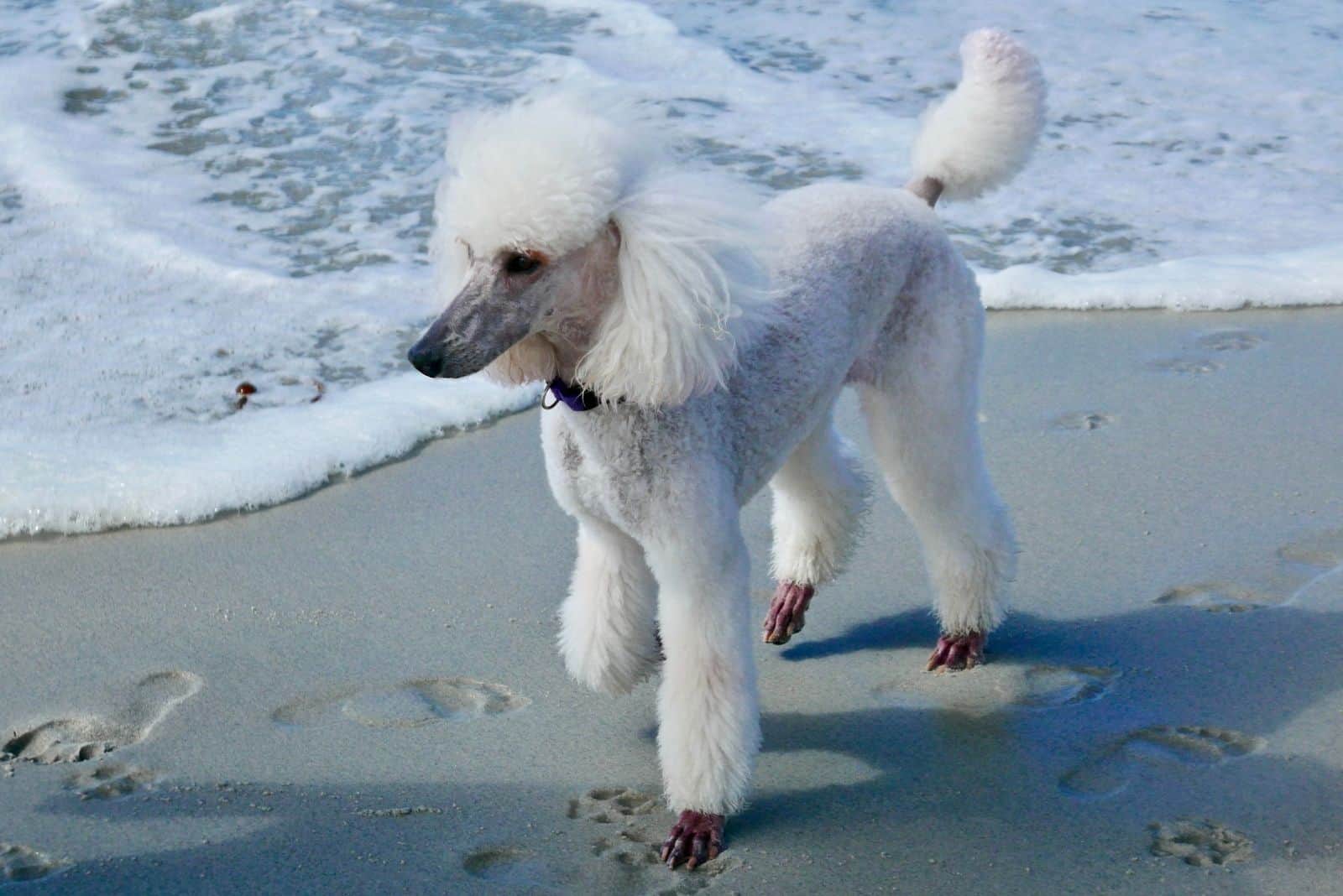
As we’ve already mentioned, you likely won’t have too many issues with a Poodle in your home.
Still, this doesn’t mean you shouldn’t do anything with the hair they do lose. Instead, you just won’t have to spend too much time cleaning everything up.
However, there are some things you should do to deal with the small amount of shedding they do experience and to ensure that their fur doesn’t mat.
Here are some ways you can deal with the shedding and ensure that their coat doesn’t tangle up!
Brushing
The first and most important step with any dog breed is regular brushing. With Poodles, this helps you get rid of loose hair that gets tangled in its curls.
Because Poodles are curly-coated dogs with medium to long hair, you should brush them regularly with either a slicker brush or a pin brush. You can even combine both for the best effect!
Overall, brushing your pooch around three to four times a week should suffice, especially if you own a Standard Poodle. Smaller dogs require less brushing since they don’t lose as much hair.
Without regular brushing, your Poodle will develop matting and tangles. This can cause knots, as well as dirt and debris to get stuck in its fur. As a result, your pup can experience irritations, sores, and several other health problems.
The best way to ensure that your pup’s skin and coat are healthy is to regularly and thoroughly brush them.
Bathing
The second important step when it comes to regular grooming your Poodle is bathing.
Next to brushing, you should wash your Poodle from time to time. This is something you absolutely need to add to your routine.
With Poodles, it’s essential that you brush them regularly and bathe them whenever needed.
Luckily, you don’t need to wash them as often as many other breeds since they don’t have too foul of an odor, but this is still something you should do.
Giving them a bath every two months is more or less frequent enough to get rid of all the debris in their fur.
Of course, in case they get dirty during walks or playtime, you should wash them more often.
The worst thing you can do for your Poodle is forget about bathing entirely!
The dirt can get stuck so badly that you won’t be able to get rid of it by simply brushing. Bathing is the way to go in such instances.
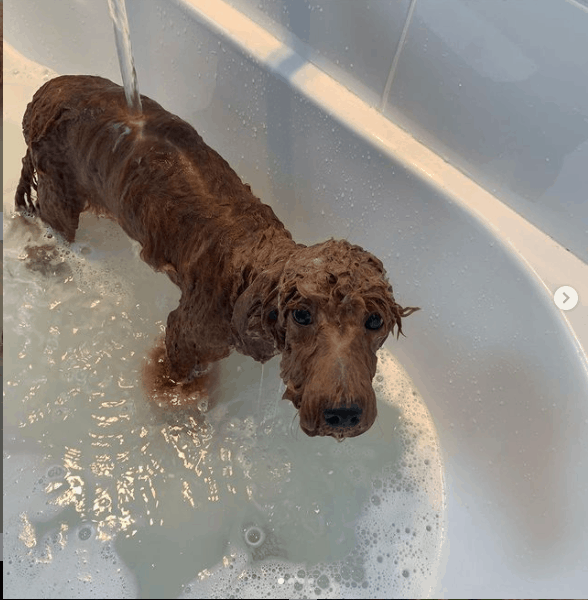
Photo from: @katsutheminipoo
The most important thing is to use a high-quality dog shampoo, as well as a good conditioner.
If you’re uncertain if they have them in your local pet shop, you can always order them online from sites such as Amazon.
Don’t forget to dry your dog out entirely once the bathing is done.
A Poodle’s hair, since it’s so curly and dense, can trap quite a lot of moisture, which could later cause plenty of health problems.
In fact, it might even lead to the growth of bacteria if left unattended!
It would be best to always towel dry your Poodle after a bath.
You might even want to blow dry him – just remember to use a low heat setting since you don’t want to burn or scare them.
Another thing to be mindful of is that you shouldn’t go overboard with the frequency of bathing. If you expose your pooch to water too often, this can dry his skin out.
Dogs have much more sensitive skin than humans do.
Water can remove natural oils that their skin produces, which will, in return, cause itchiness and flakiness, and these can cause problems for you as well – but more on that later.
Hair Clipping
This is the final, but not the least important part of grooming your Poodle.
When you cut down its coat, you make sure that there isn’t much space for loose hairs to stick in. The shorter the fur – the lower the chances of matting are.
People love to shape their Poodle’s coat into a fancy design or pattern, but other than aesthetics, there is no need to do this.
You can simply cut them down to around one or two inches all around their body, and this will keep them comfortable.
A shorter coat will help them have less dirt, debris, and similar particles in their fur.
Of course, you don’t have to keep a Poodle’s fur short. A Poodle can feel just as comfortable if you leave him to have his natural, longer coat.
However, this means more work for you as you’ll need to groom your pup more often.
Read Also: 10 Reasons Why Poodles Are The Worst
As a dog owner, you probably want only what’s best for your dog. Taking care of his coat is part of the daily routine you should keep.
Poodles can take a bit more time to groom than many short-haired breeds, especially if you want to ensure that their fur is long and luscious.
However, hair clipping, brushing, and bathing is done for more than just your pet’s good looks.
It would be best if you also did this as it can improve your beloved companion’s overall health.
At the same time, it can make house cleaning much more straightforward.
Are Poodles Hypoallergenic?

Poodles are considered to be hypoallergenic, even though this doesn’t mean they are free of allergens.
They will simply give you fewer issues than most other purebred dogs. If you’re someone suffering from dog allergies, then Poodles can be an excellent choice.
However, it’s essential to understand that no dog is truly hypoallergenic.
This is because you’re not actually allergic to dog hair, but rather to its dander, saliva, and urine.
These three dog ‘products’ get stuck to a dog’s hair, then fly around all over your house, causing you breathing issues.
Since all dogs secrete saliva, urine, and dander, no dog is free of allergens.
Still, Poodles won’t give you too much trouble. They have a single coat of fur, so their skin won’t produce as much dander as double-coated breeds.
Also, these dogs are low shedders, so the dander won’t get spread around as easily.
While your nose might itch from time to time, Poodles typically won’t give you any more issues than that.
Even people with severe allergies are usually just fine around this breed.
Hypoallergenic Features
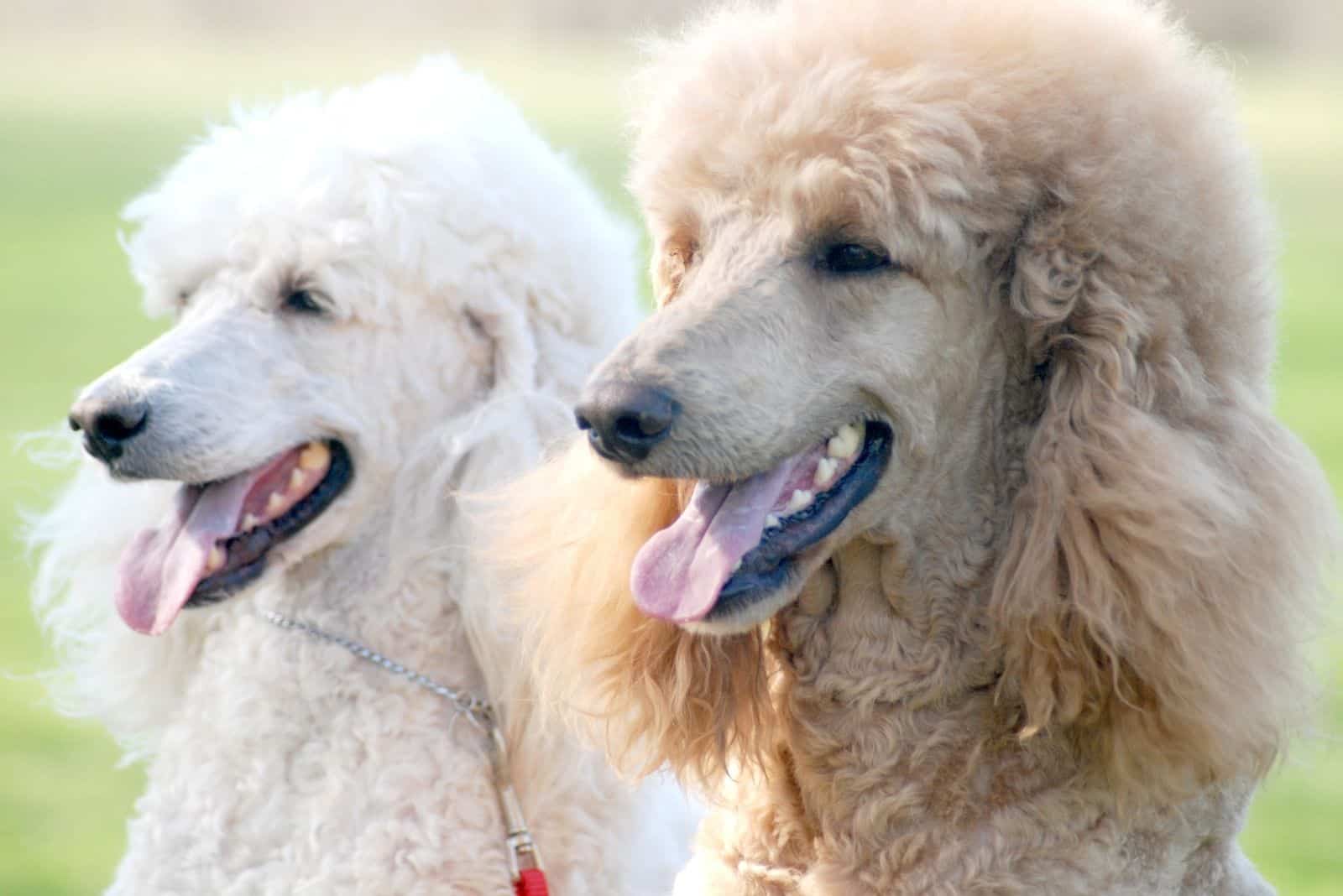
There are few features that Poodles have that help them with their hypoallergenic status. We’ll list them below.
They Don’t Shed
We’ve focused on this one quite a lot in this article. While most dogs will mark the entire house with their fur, this isn’t the case with Poodles.
Their curly hair doesn’t shed half as much as that of many other breeds.
Also, Poodles rarely have a change in the shedding amount during the shedding season. They won’t blow their coats, which is good news for anyone with dog allergies.
In fact, a Poodle’s coat quite resembles human hair in that it keeps on growing rather than being changed as often as with many other animals with fur.
This is why Poodles are expected guests at professional groomers.
Low Dander Production
Dander in dogs is almost the same thing as dandruff in humans. Most dogs have quite visible dander, and this isn’t a bad thing – unless, of course, you’re allergic to it.
If you don’t groom your Poodle correctly, dirt and debris get stuck on their skin underneath all that fur, irritating it, which can result in dander.
Not just that, but if your Poodle has itchy skin, he’ll scratch it, creating more dander and effectively spreading it around.
Fortunately, Poodles are dogs that don’t produce much dander. This is especially true with Toy and Miniature Poodles since the smaller the dog, the less dander it makes.
Low Drool Secretion
Dog saliva is another common allergen in dogs. Because of this, some dogs that drool a lot, such as pugs, can be worse for allergy sufferers than pups without this tendency.
Poodles, luckily, won’t drool that often, if at all. They are fairly clean dogs that won’t leave drool stains all over themselves.
Even if you don’t have a problem with dog allergies, this is good news as no one really likes having an animal drool on them!
They Are Intelligent
This isn’t a feature that many dog owners think is important to help with allergies, but it certainly can be! Why is that so?
Intelligent dogs are highly trainable. You can teach them not to climb on furniture or to jump on people.
This can help reduce the spread of dog hair all around. They’ll stay when you tell them, and they won’t lick you without permission.
While this may not seem important, it is very helpful. Keeping your pup under control is a great method of keeping you safe from dog allergies.
Are Poodle Mixes Hypoallergenic?
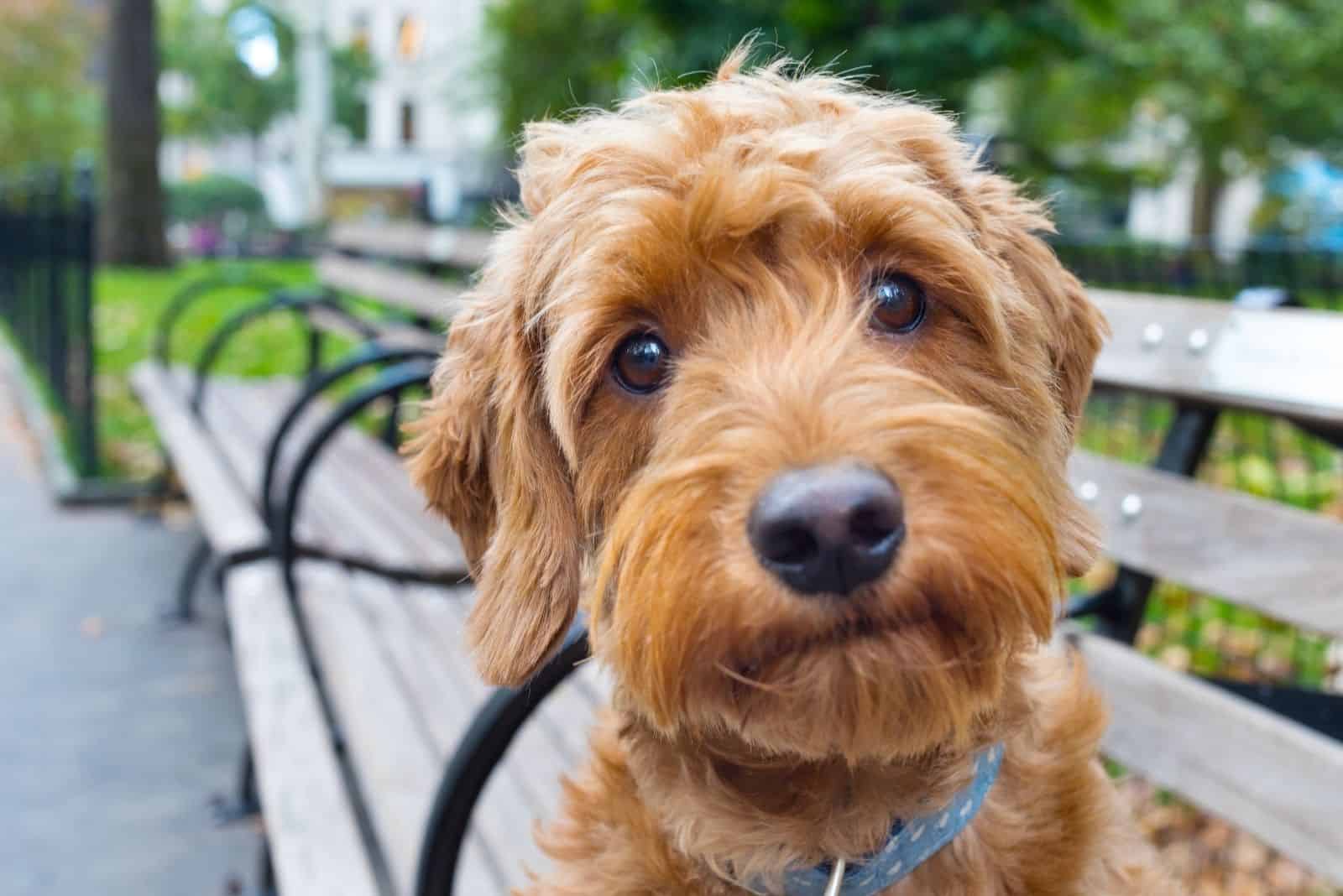
Unfortunately, some of the most popular dog breeds can cause many issues for people with allergies.
This has made breeders do all that they can to create more species that are safe for allergy sufferers. One of the methods they discovered is crossbreeding Poodles with other breeds.
This led to many designer breeds (or hybrid breeds), especially in the last few years.
Today, we have Goldendoodles (a crossbreed of a Poodle and a Golden Retriever), Labradoodles (a Labrador Retriever mix), Sheepadoodles and other ‘Doodles’ which includes even the Great Danoodle!
There is no guarantee that a Poodle mix will be as hypoallergenic as its Poodle parent.
However, it will undoubtedly be an improvement, and most of these combinations are indeed considered to be as hypoallergenic as possible.
Other Hypoallergenic Dog Breeds
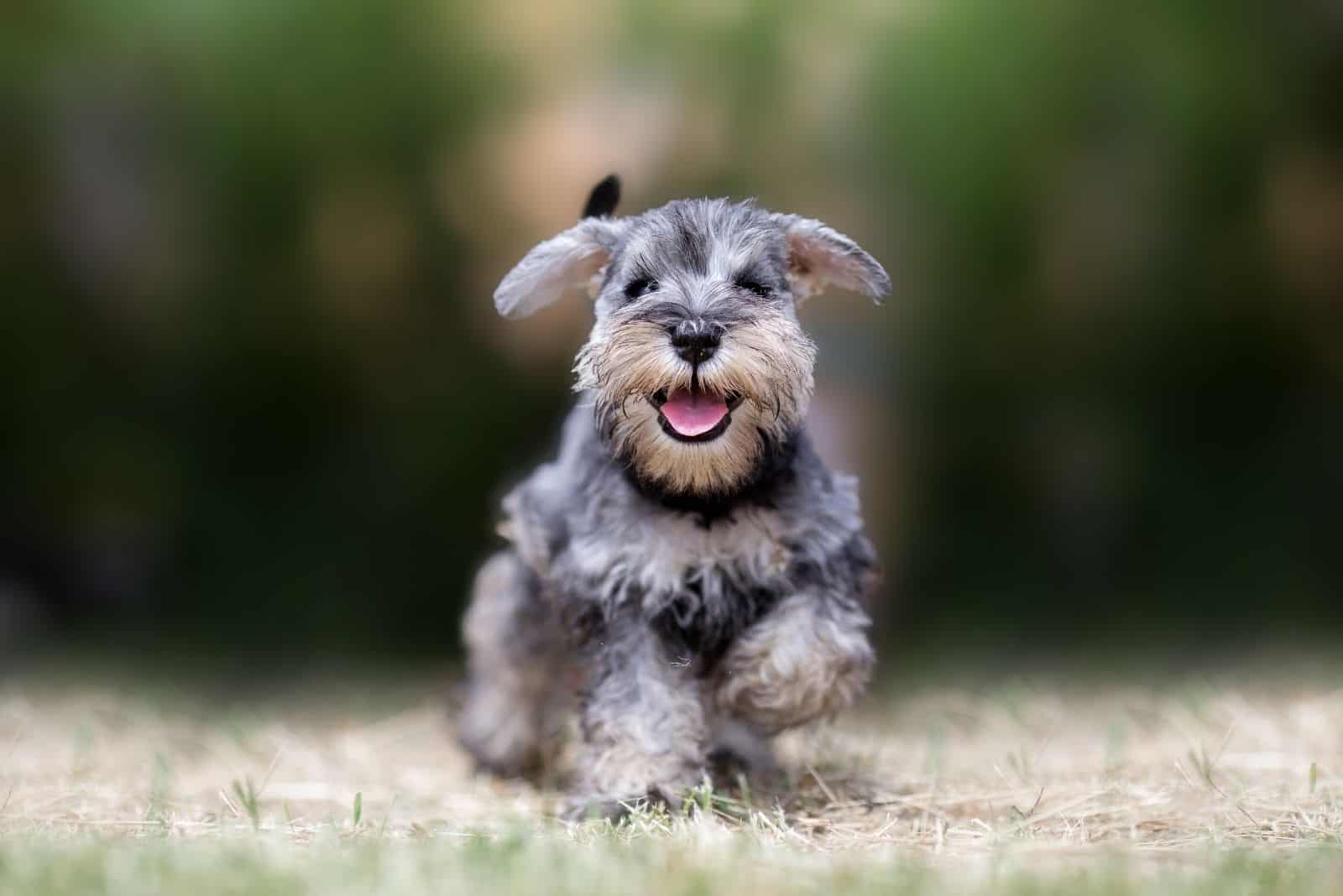
Poodles are not the only hypoallergenic dog breed out there, although they are the most popular one. Here are a few more species that won’t give you too many problems.
Schnauzer
Schnauzers, especially Miniature Schnauzers, are an excellent choice for allergy sufferers. They are exceptional watch dogs, no matter their size.
Active and playful, Schnauzers will ask you to dedicate a lot of time to them.
Luckily, they won’t give you any breathing issues, which is enough to make up for the energy they have.
With this dog, you’ll get a brave companion who won’t ruin your good night’s sleep by forcing you to cough all the time.
Bichon Frise
Next to Poodles, the Bichon Frise is AKC’s top pick for allergy sufferers.
This small, snow-white breed’s name literally translates to ‘fluffy white dog,’ making it all the more adorable.
They have a similar fur type to Poodles. While they do shed, loose hairs will get stuck on the curls, so they won’t fly around and cause issues.
At the same time, Bichons are small in size, so they won’t invade your space as much as bigger breeds.
Maltese
Another pure white and tiny dog, a Maltese is a loyal and cute hypoallergenic dog that doesn’t shed, thanks to its curly coat that resembles a human’s hair.
They make perfect lap dogs, but even the cuddle sessions won’t leave you feeling bad. This is how little dander they produce.
The Maltese typically has long fur, but many owners prefer to cut it, which will help you with grooming.
This is up to your preference, of course, and how much maintenance you’re ready to provide.
Havanese
Havanese are some of the happiest dogs out there! Their long, silky coat comes in various colors, and they remind people of fluffy carpets with legs.
Many dog owners love to keep their fur long as it won’t shed or give you any issue with vacuuming.
However, it is prone to tangles, so if you’re not prepared to do long grooming sessions, you might prefer to keep it short.
Shih Tzu
These ‘lion dogs’ are the number one choice for the senior population as they don’t require much daily activity and are fairly easy to groom.
Shih Tzus were the Tang Dynasty’s favorite dogs, making them one of the older dog breeds out there.
It’s hair grows long, so you’ll have to groom it regularly, but it won’t shed and spread loose hair everywhere.
Also, it is a tiny dog, so it won’t produce as much dander and saliva. Chances are you won’t have any allergies with them.
Portuguese Water Dog
This playful dog is loyal, active, and hypoallergenic. It was even among some of the dog breeds that got inside the White House!
It is a great family pet since it doesn’t have as much energy as some other dogs.
Portuguese Water Dogs will even adapt well to apartments, as they don’t require that much space.
Their curly hair keeps the fur from falling off, so you won’t have much cleaning up to do.
Make Your Home Allergy-Proof
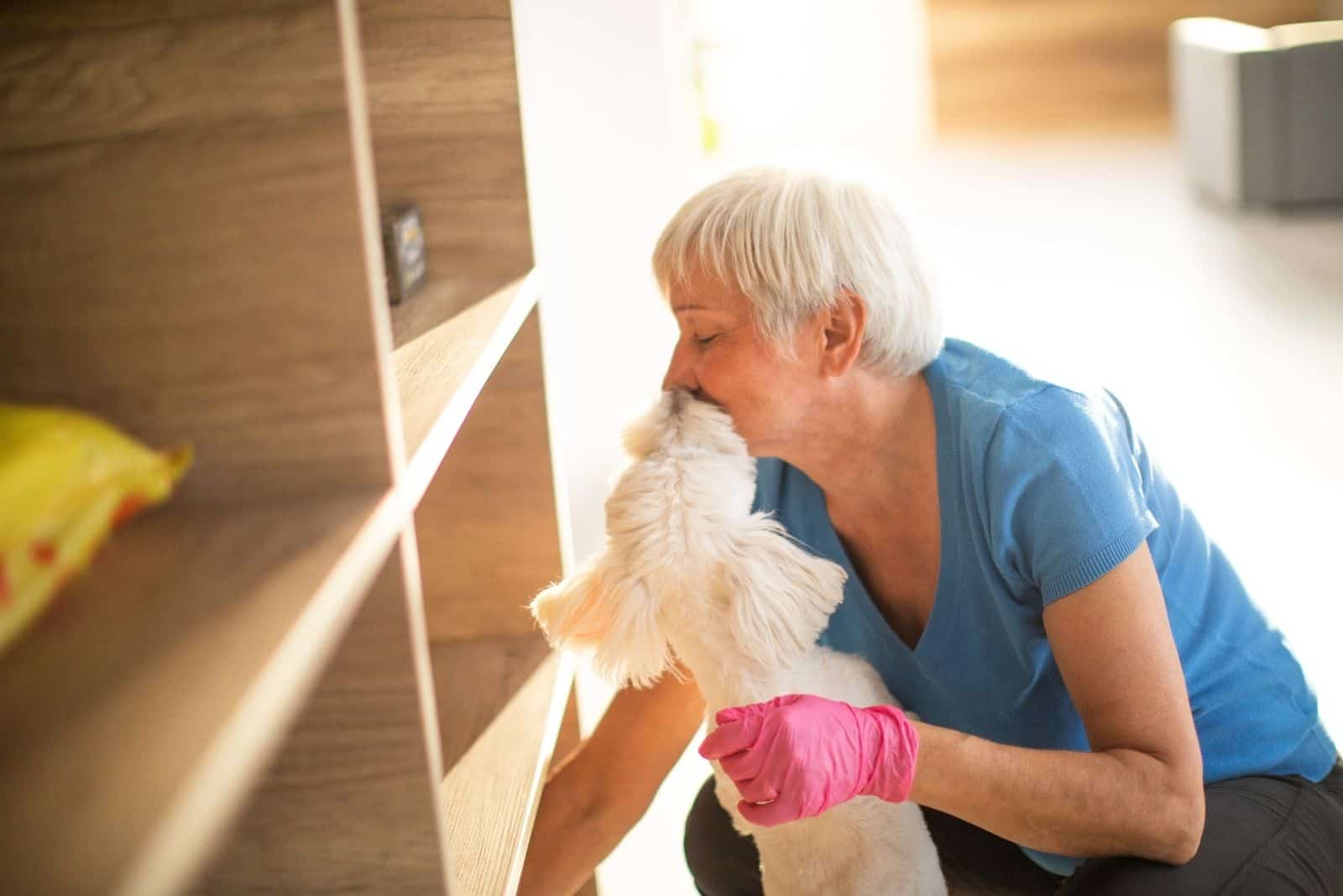
Even if you’re among the small percentage of people who have an allergy when near Poodles, don’t worry. There are many ways to lower your allergy symptoms.
Cleaning and vacuuming your house regularly is a great way to get rid of hairs stuck in your furniture and piled on your floor.
Without the fur, chances are the dander won’t spread around and make your symptoms worse.
This includes your clothes as well. Dog hair can get onto your clothes, making things worse.
It would be wise to dog-proof certain parts of your home, so your pooch won’t have access to them.
If anything else, you shouldn’t let your pet inside your bedroom, and under no circumstances should they sleep in the same bed with you.
Getting an air purifier, such as a HEPA system, is another good way to eliminate dander from the air.
If you don’t breathe it in, then dead skin won’t give you too many issues.
Finally, if nothing else helps, you can always consult with your doctor about giving you some suitable antihistamines to help you relieve yourself from allergy symptoms.
No matter what you do, there is no reason why you should get rid of your dog because you have allergies. There are many ways you can keep your dog allergies at bay.
Still, getting a low-shedding dog is always a good idea as it makes things much more manageable.
Because of this, if you’re an allergy sufferer, then getting a Poodle is a fair consideration.
Read Next: Poodle Feeding Chart: Maintaining The Ideal Weight
